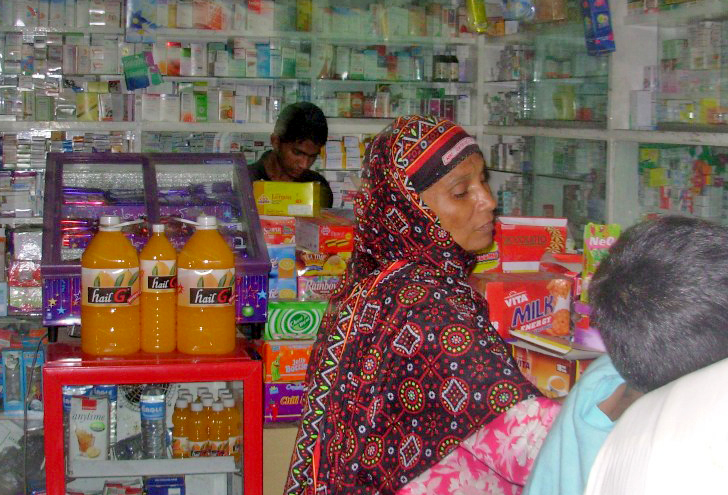“I began soon after I was married, because I was so unhappy,” she said. “My husband is violent. I keep the drug use a secret from him and our three children, though my nine-year-old son sometimes goes to the pharmacy to buy the `medicines’ I ask him to get.
“I tell him they are to help my headaches,” Rizwana told IRIN in Lahore, Pakistan’s second largest city and capital of Punjab Province.
The 30-year-old mother has been using benzodiazepines (a class of compounds used as tranquillizers) and narcotics for the last 10 years. Like her, thousands of married Pakistanis of reproductive age are addicted to drugs, a problem that has taken a serious toll on families, according to Uzma Ahmed, a health visitor who offers advice to women in a community on the outskirts of Lahore.
“There are women I know who use drugs,” Ahmed said. “Often they are terrified their husbands will beat them if they find out. The drug use has a highly negative impact on families, especially the children who sometimes see their mothers smoke, or swallow pills and fall asleep for hours. Some want to give up, but where do they go for help?”
A study by the UN Office on Drugs and Crime (UNODC) of 4,632 female drug users in 13 cities in Pakistan’s four provinces in 2010 found that drug use among women was discreet, hidden and more of an individual activity than among male users. While the number of users was fairly large in cosmopolitan cities like Karachi and Lahore, it also existed in other areas of the country.
The study found that nearly three-quarters of users were aged 21-40, and were illiterate. However, in Peshawar city, nearly half of the users had some education. Overall, more than half were married and mostly lived with their husbands. Most used hashish, but some used hard addictive drugs including synthetics that were available over the counter.
Low self-esteem
“Many female drug users suffer from low self-esteem, loneliness, depression, a sense of isolation and often feel powerless,” the study found. “In an attempt to minimize the stigma, [they] do not seek assistance, and do not utilize services available for them which further complicate the situation.”
Pakistan’s drug problem is documented. In 2006, an assessment by the government found about 628,000 opiate users in the country, of whom around 482,000 (77 percent) were heroin users. The assessment report estimated the number of injecting drug users at about 125,000, double the estimate for 2000.
In March, a joint UNODC and World Health Organization (WHO) mission to Pakistan said improved drug treatment programmes were needed given the scale of the problem. Such programmes, it noted, were often a “low priority on the political agenda” in many countries with a drug problem.
Locals in Lahore said treatment for addiction was hard to come by. “My son, Bilal, 25, is addicted to heroin,” Imdad Asad, 60, said. “We have paid out over Rs. 500,000 [US$5,882] over the last year at various `treatment’ clinics, but he just reverts to the habit after leaving them. These centres are just out to make profits by fleecing desperate families.”
Easy to buy
At the same time, drugs were relatively easy to buy. “I have regular customers, both men and women, who come in to buy injectible narcotics or other drugs like `xanax’ [a benzodiazepine]. I know I should not be selling these without prescription - but then they will just go to another shop,” a pharmacist in Lahore who preferred anonymity told IRIN.
A user, Samina Bibi* 22, said: “It is not hard at all to obtain drugs. I use some blue pills to help me sleep. I do not know what they are. I also smoke hash. A drug dealer who lives close to my house comes and supplies them at my doorstep.”
Treatment is harder for female users because of stigma and the covert nature of use, according to UNODC. While male users are easily seen in public places, women users tend to be hidden far more deeply in the shadows of society.
“Any effective treatment plan for drug addiction can work only if there is effective control on the sale of prescription drugs,” Khalid Bukhari, WHO country adviser on medicine, said. “Right now, psychotropic drugs, narcotics and other substances can be bought freely.
“We need a triple prescription system, where one copy is kept by the doctor, one given to the pharmacy and one to the patient.”
*Not a real name
kh/eo/cb
This article was produced by IRIN News while it was part of the United Nations Office for the Coordination of Humanitarian Affairs. Please send queries on copyright or liability to the UN. For more information: https://shop.un.org/rights-permissions





